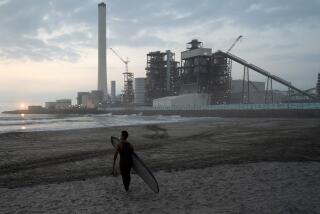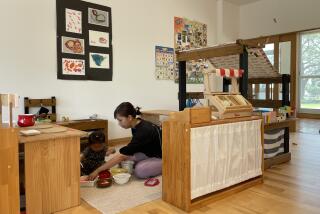Japan Transforming Its Rust Belt Into High-Technology Center
KITAKYUSHU, Japan — Former steelworkers in the western industrial town of Kitakyushu are growing flowers and building a new amusement park as the area struggles to return to prosperity.
Steel plants on Japan’s Kyushu Island are suffering amid a strong yen and intense foreign competition, but civic planners are determined to save Japan’s Rust Belt with an infusion of high technology.
Steel and heavy-machinery plants throughout Kyushu Island are losing steam in the current climate. Unemployment is twice the 2.3% national average and government planners are toiling to tempt young workers to stay in the area.
But civic authorities have heeded former Prime Minister Noboru Takeshita’s emphasis on local autonomy and are pulling cities up by their own bootstraps. The Fukuoka Prefecture is now planning a shift from heavy industry to high technology.
“The figures do not look good for Fukuoka right now, but we are working to redesign our industry structure,” said Kiyo Kuroishi, chief of planning for the prefecture. “Until now, the central government would take the initiative. The mentality now is for each region to think seriously about what it wants to do.”
For example, Kitakyushu, a port city with more than 1 million people and dominated by Nippon Steel, will be rescued by imitating Pittsburgh’s revival, city planners said. Pittsburgh, the United States’ steel-making center, has been attracting high-technology business and research.
Kitakyushu’s planners have formed a key eight-member civic group to tackle topics such as industry development and city identity.
“In general, Kitakyushu has the image of being dark,” said Masahiko Fukami of the Kitakyushu Prosperity Enrichment Council. “We are trying to change completely its identity and make it a beautiful, modern city.”
Nippon Steel’s Yawata Works, built in 1901 and once Japan’s largest steel operations, has seen employment drop to 11,000 from a postwar high of 43,000 workers and 10 blast furnaces in the early 1960s. The number will soon drop to under 10,000 workers through attrition and redeployment, said spokesman Kosuke Sato. No one has been fired.
Nippon Steel, like its Japanese rivals, has spent 2 years slashing production and setting up new businesses that include plant engineering, communications and biotechnology. Of Nippon Steel’s 60,000-strong work force, 12,000 are now in a new business or joint venture.
Nippon predicts that non-steel business, now accounting for only 5% of total sales, will reach 40% by 1995. To achieve this target, many steelworkers in Kitakyushu are retraining for new careers.
Yoshimasu Kokanemaru, 48, once worked on the docks but now tends orchids in four Nippon greenhouses on a hill overlooking the last remaining blast furnace, giving up a higher-paying shift job to cultivate his favorite hobby.
The prefecture is also investing in Nippon’s Spaceworld, a 20-billion yen ($155-million) amusement park/space education center on the grounds of the Yawata Works. Spaceworld, due to open in 1990, will employ 200 full-time and 500 part-time workers, hiring from the region, Sato said.
Prefecture leaders are optimistic that the region will attract technological investment, boost scientific educational programs and keep home-grown talent at home.
In a rare move among Japan’s 47 prefectures, Fukuoka has budgeted 1 billion yen ($7.7 million) for a science and technology endowment to finance projects by local companies, said Kuroishi.
More to Read
Sign up for Essential California
The most important California stories and recommendations in your inbox every morning.
You may occasionally receive promotional content from the Los Angeles Times.










